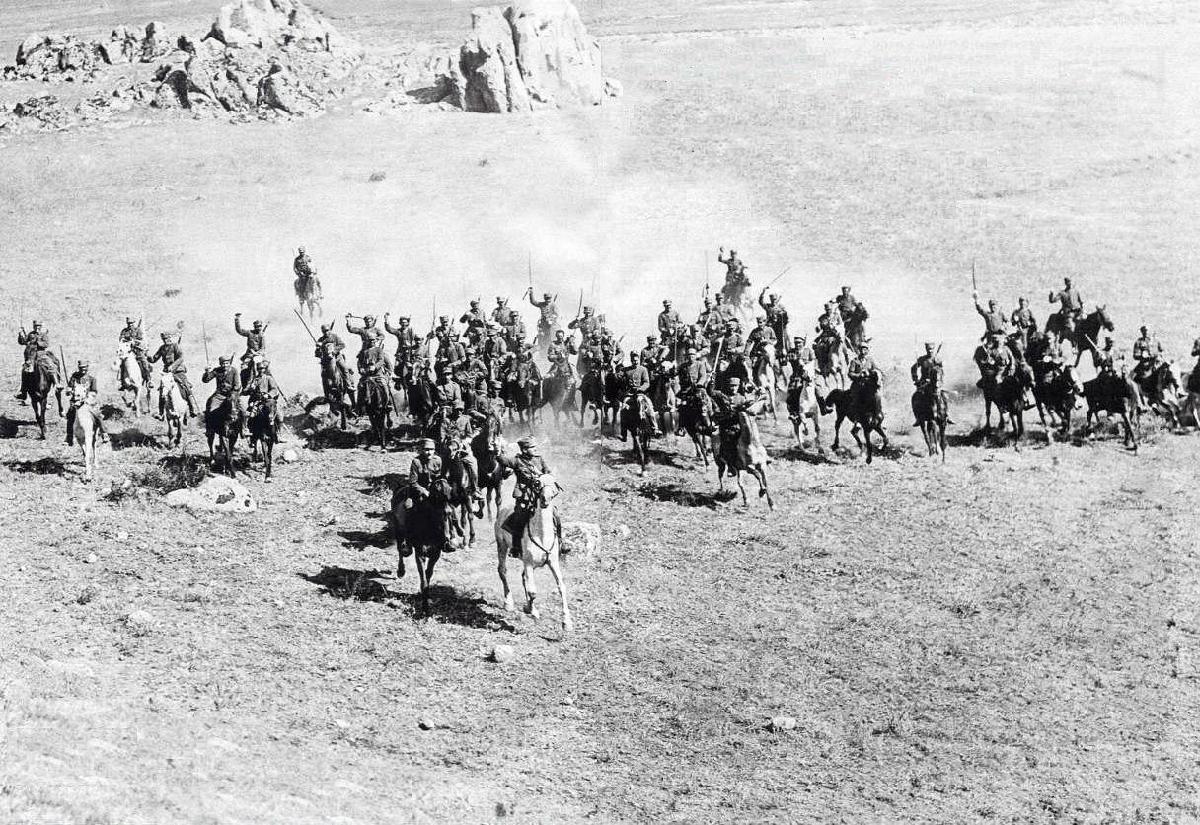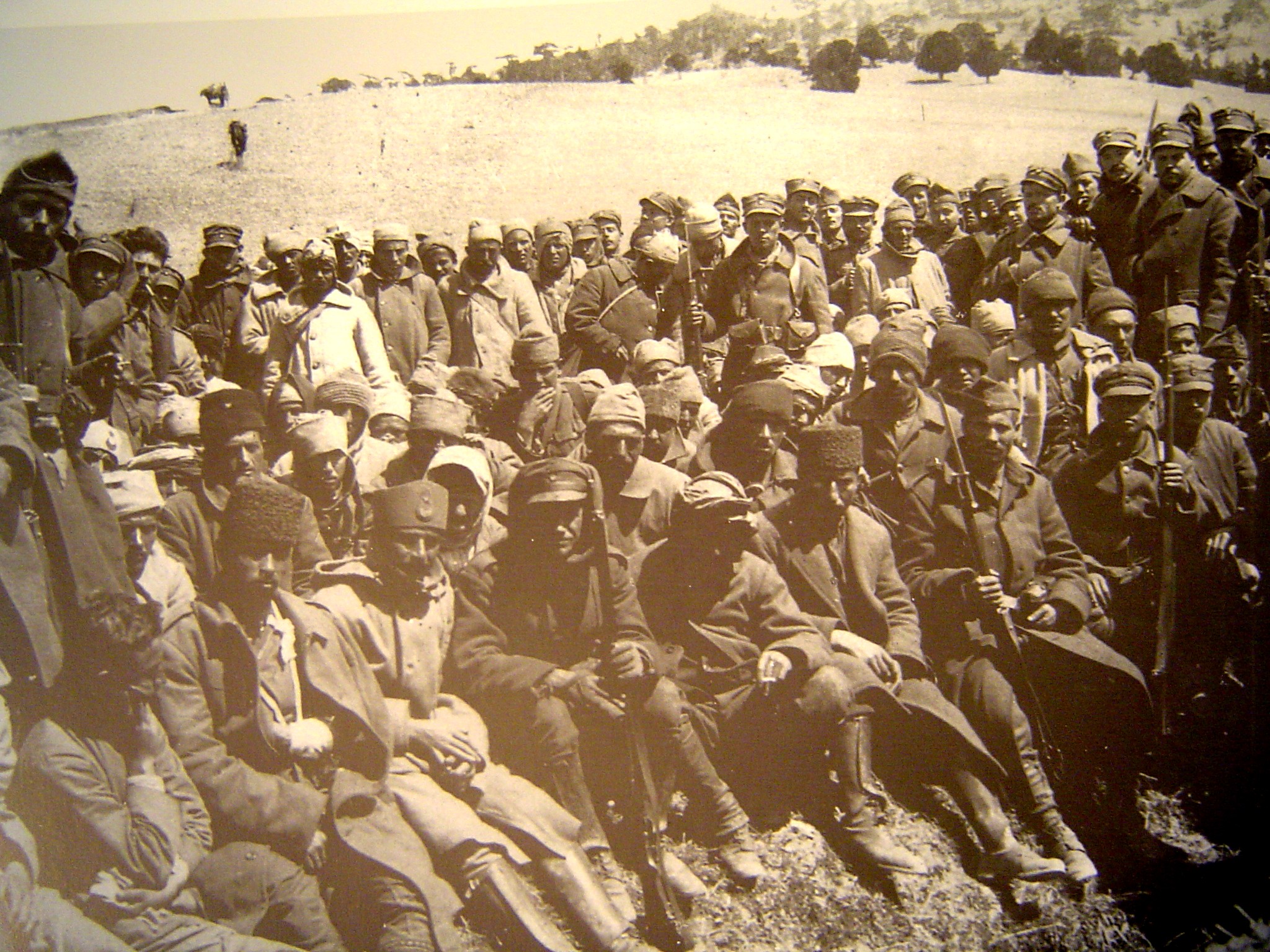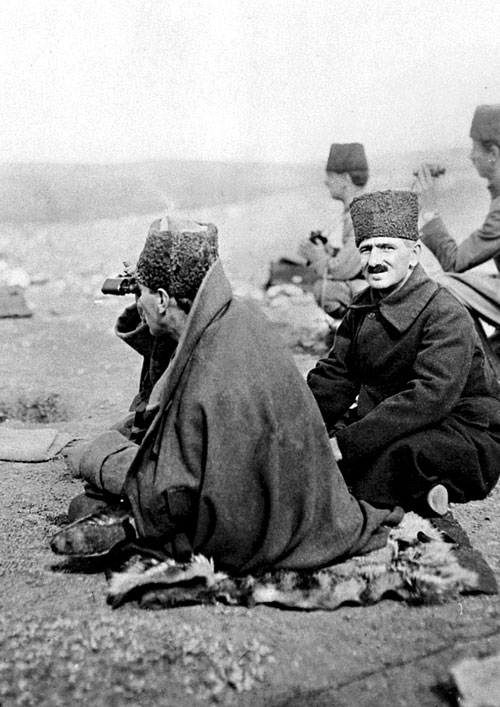The Greco-Turkish War was one of the largest and most consequential conflicts of the interwar period, spanning the period between World War I and World War II. It was a significant factor in the overall trajectory of the modern Middle East. The Hellenic Kingdom looked to expand its territory to connect with the Greeks of Asia Minor.
In contrast, the nationalist forces under Mustafa Kemal looked to repel the Greek army and simultaneously expel foreign militaries to create a Turkish state. The war intertwined the Entente powers and revealed key lessons in logistics, the importance of a competent officer corps, and the use of key terrain to a defensive advantage, insights that can be studied for modern warfare today.
Beginnings of the Greco-Turkish
Against the backdrop of the capitulation of the Ottoman Empire, the remaining territories of the Middle East were placed under zones of influence (Sykes-Picot). In contrast, Asia Minor was put under full military occupation by several nations. The remnants of the Ottoman Empire were carved into a rump state by several nations.
Turkish nationalist forces would conduct an insurgency led by Mustafa Kemal, a skilled military commander who had defeated British forces at Gallipoli, thereby securing their own state without foreign occupation. The Entente was overstretched, and its citizens felt the economic brunt of WWI, which made it hard for countries such as the UK and France to allocate sufficient forces capable of defeating the factions of Turkish nationalists. Instead, the British would support a key ally in the Mediterranean to defeat the Turkish army—the Hellenic Kingdom of Greece.
During WWI, the Hellenic Kingdom, overseen by King Constantine I, initially decided to remain neutral despite having a pro-German government. This act caused anger among the Entente and pro-intervention Greek faction (the Venizelists), which resulted in Britain, France, and the latter exiling the then-monarch.
The new government, led by Prime Minister Eleftherios Venizelos, adopted a core policy of irredentism regarding the historical Greek lands of Asia Minor, known as the Megali Idea. Furthermore, alongside Armenians, the remaining Greeks under the empire suffered from gruesome massacres amounting to genocide at the hands of the Ottomans in regions such as Eastern Thrace and Pontus, which also became another factor to initiate the war.
With the military backing of London and Paris, who sought to quell the Kemalist insurgency that posed a threat to their zones of influence in Asia Minor, Athens initiated the Greco-Turkish War on May 15, 1919, during the naval landing in Smyrna.
Early Hellenic Army Victories
The Hellenic expeditionary army quickly secured the Greek mandate of Smyrna, then secured the outlying cities of Aydin, Menemen, Bergama, Ayvalik, and Cesme. After consolidating tens of thousands of troops, the British and Hellenic army would move to secure cities near the Sea of Marmara during the 1920 summer offensive.
The Greek army captured the cities of Panormos, Izmit, Mudanya, Bursa, and Usak, securing much of Western Anatolia for both Athens and London. A Turkish counterattack at Gediz proved inconclusive before the winter set in.
In Greece, King Alexander died from a monkey infection, and citizens felt from WWI and now feeling exhausted from an inconclusive campaign at the time in Asia Minor. A pro-royalist faction would win the upcoming elections, which would oust Venizelos as PM, who was replaced by Dimitrios Gounaris. The November 1920 elections would play a consequential turning point in the war going forward in 1921 and 1922.
Athens Overstretched Its Logistics and Allied Support Wears Thin
Instead of continuing to secure the coastlines where the Hellenic and British navies could provide maritime and logistical support, the Greek army pushed into Central Anatolia to defeat the Turkish nationalist forces for good. Later in the war, several Turkish factions organized into a more cohesive military under Mustafa Kemal’s leadership and entrenched themselves, making the Greek advances even more stiff and costly.
Furthermore, the Turkish nationalists were able to allocate more forces against the Hellenic army. The other wars against Armenia and France ended favorably for the Kemalists, and Greece began to lose French support gradually. The Soviet Union, wanting to counter the Entente, started supplying the Kemalist forces.
In the United Kingdom, the Lloyd George government faced economic upheavals and various conflicts in the Middle East, which Western countries failed to comprehend due to their limited understanding of the ethnic and religious divisions. The British government also recognized the threat posed by the Soviet Union and had to prioritize its own interests amid an overstretched empire, which effectively reduced wartime support for Greece.
Kemalists Utilize Key Terrain at Sakarya
In July 2021, the Hellenic army and increasingly unified Turkish forces engaged at the Battle of Kutahya-Eskisehir. Greek troops would win the battle, but it was a strategic failure as there was a chance to encircle the nationalists, which the newly replaced officer corps failed to capitalize on.
Athens’ new command wanted to push towards the Sakarya River and finish off the Turkish army. However, the Hellenic army stretched its logistics thin and needed additional reinforcements. The Greek government neglected suggestions of digging in and consolidating gains—a fatal mistake that would set the tempo for the rest of the war.

The Sakarya River, located near Ankara, was strategically important to the Kemalists as it was their proposed capital and center of resistance. For Greece, they knew if they could defeat the Turkish army at Sakarya, they could take Ankara and quell what was left of Turkish resistance.
Topography would play a crucial role in the Battle of Sakarya as the river curves into a strong natural barrier for any defending military. Adjacent to the river, marked with rigged rills, which gave the Kemalists overwatch on incoming Hellenic army units.
Furthermore, it was the peak of summer near Ankara, and central Anatolia is known for its harsh desert-like terrain and limited water supply. The Greek army, exhausted from marching towards the city, was already weakened before the battle even began.
The battle began on August 23, when the Greek army charged up fortified hills and heights, which was advantageous for the Turkish military to inflict numerous casualties upon Greece. For almost a month, neither army could achieve a decisive breakthrough. Still, time was not on Athens’ side due to the constant harassment of their supply lines by Turkish forces, which exacerbated their overextension problem.
The turning point of Sakarya came when Mustafe Kemal personally led a minor counterattack near Mount Chal. Though the counterattack achieved minor success, the Hellenic command feared a break of their flanks, which King Constantine would order a scorched-earth general withdrawal, primarily in Turkish-majority villages.
Greece’s Disintegrated Command and Control and Turkish Victory
During the winter of 1921 and the spring of 1922, the Turkish army expanded in size with the addition of recruits as Mustafa Kemal gained further recognition as a capable commander. The British government’s support for the Greek military ran thin, and France and Italy would withdraw from their spheres of influence in Asia Minor, which left future flanks of the expeditionary force exposed and allowed the nationalists to fully focus on finishing the Greco-Turkish War.

The morale of the Hellenic army was low, as some soldiers remained deployed for years without rotation, and the Turkish population of Asia Minor increasingly saw the Greeks as occupiers. Furthermore, Greece became increasingly politically fractured by the National Schism, as the general population wanted the war to end regardless of the outcome.
The decisive battle of the war would take place at Dumlupinar, where Turkish forces decisively broke through the exhausted Greek army, whose lines of communications became severed enough that commanders could not give proper orders during the defense. What followed would be a disorganized and chaotic retreat, which saw thousands of Greek POWs and numerous others missing.
Effectively, the Hellenic army was chased out of Asia Minor as the lack of command and control became too severe to cover any tactical retreat. The war would culminate in the Turkish army’s capture of Smyrna, which saw over 100,000 Anatolian Greeks being killed in an ultranationalist frenzy, and the rest of the Greeks of Asia Minor ultimately being exchanged for the majority of Turks in Greece, which became one of the largest ethnic cleansings in the post-WWI interwar period.
Lessons from the War
Irredentism plagued various countries after World War I, as the age of empires began to decline, with Greece being no exception. The Megali Idea arguably set the country back, leading to a major refugee crisis, political instability, and a financial crisis that would take decades to recover from.
Greece, being a naval power whose infantry could be easily supplied by sea, made a tactical error of being baited into the punishing terrain of Central Anatolia. Supply lines were harassed and hampered by Turkish sabotage teams, and the Hellenic military failed at reinforcing their logistical chain.
The Hellenic army also missed a chance to encircle the Turkish army at the Battle of Kutahya-Eskisehir. The failure of Athens to encircle the nationalist forces allowed the Turkish military to reorganize across the Sakarya River, where the Kemalists utilized heavy defenses and terrain to employ attrition against the Greek forces.

Not preserving units and digging in concrete defense lines was not only a miscalculation, but a failure of field officers not having the freedom to enact critical decisions on the ground. At the same time, command remained unconcerned with their war-weary forces. During the chaotic collapse of Dumlupinar, Lt. Gen. Nikolaos Trikoupis had not known that he had become the commander of the expeditionary force commander-in-chief due to the failure of Athens to relay information to field officers.
Hellenic army field officers and enlisted would be plagued by bureaucratic politics back at home and a lack of unified command, while various Turkish factions and citizens gradually became more supportive of the nationalist movement by Mustafa Kemal, who would be gifted with the nickname ‘Ataturk’, also known as “father of Turks.”
War fatigue in the last few years, among unmotivated soldiers and the general population in Greece, has become a recurring theme in various wars that have become unpopular and prolonged. As seen in Vietnam, Iraq, Afghanistan, Algeria, and others, various Western and Eastern militaries would be put under political pressure to end the wars due to mounting casualties and lack of a definite mission.
The Asia Minor Campaign wasn’t just one of the most harrowing conflicts of the interwar period that would shape the Mediterranean and modern Middle East, but also a template for lessons to learn in contemporary warfare. The war revealed the worst aspects of nationalism and irredentism, highlighting key lessons in the overextension of forces, logistics, and bureaucracy in wartime, as well as the absence of command and control over troops.
Furthermore, the Greco-Turkish War exhibited the significance of utilizing key terrain to a less-equipped force’s advantage against a larger adversary, a principle that future wars in Algeria, Vietnam, Afghanistan, and Yemen would also highlight.

Julian McBride
Julian McBride is a former US Marine, forensic anthropologist, and independent journalist born in New York. His bylines can be found in the National Security Journal, Byline Times, 19FortyFive, Heritage Daily, The Defense Post, Journal of Forensic Psychology, Modern Diplomacy, Small Wars Journal, Modern Warfare Institute, Manara Mag, The Strategist, NKInsider, and UK Defence Journal.

